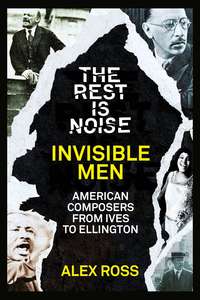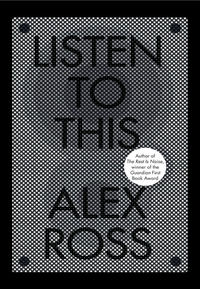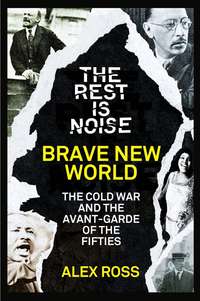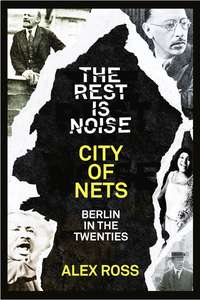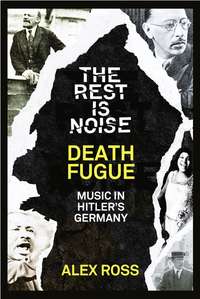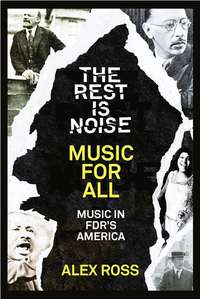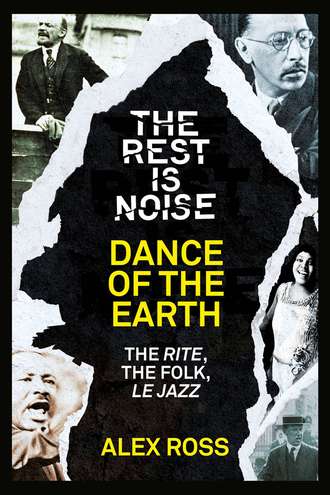
Полная версия
The Rest Is Noise Series: Dance of the Earth: The Rite, the Folk, le Jazz
Bartók’s quest led him both onward and inward. In the first days of June 1913, he boarded a steamer in Marseille, bound for Algeria. His ultimate destination was Biskra, on the northern edge of the Sahara, where, seven years before, Henri Matisse had found the inspiration for his raw, sensual Blue Nude. The trip lasted only two weeks: the composer fell ill with fever and had to retreat to Algiers. He hoped to return the following summer, and researched diets that would have allowed him to stay healthy. But the onset of the First World War put a stop to his plans. His wax-cylinder recordings of North African music remained a prize possession and led to a landmark ethnomusicological essay. They also furnished new compositional ideas, particularly in the area of rhythm. Bartók wrote from Algeria: “The Arabs accompany almost all their songs with percussion instruments; sometimes in a very complicated rhythm (it is chiefly varying accentuations of equal bar lengths that produce the different rhythmic patterns).” This could serve as a description of “The Augurs of Spring” in Stravinsky’s Rite, whose first production was still playing to giddy Paris crowds as Bartók set out for Africa.
Maurice Ravel is a special case among turn-of-the-century “realists.” He was a man both urban and urbane, disinclined to go wandering up a mountainside with an Edison cylinder on his back. Yet, during his brief and brilliant career, he drew on a sizable library of folk material—variously, Spanish, Basque, Corsican, Greek, Hebrew, Javanese, and Japanese. He, too, was a phonographic listener, sensitive to microscopic details of phrasing, texture, and pulse. A gentleman flaneur with unusual powers of empathy, Ravel could spend his day as a man of the crowd, then reconstruct the experience in the privacy of his garret.
Commonly considered the most purely French of composers, Ravel was in fact something of a cultural mutt, part Basque and part Swiss. Although he was taken to Paris when he was four months old, his Basque origins held sway over his imagination, the connection maintained in the songs his mother sang for him. Manuel de Falla judged Ravel’s Spanish-themed works “subtly authentic,” which is a good general description of the composer’s music as a whole. Ravel’s father was a Swiss engineer who helped to pioneer, in unsung ways, the automobile; the Ravel prototype of a gas-powered car perished during the German bombardment of Paris in the Franco-Prussian War. In a sense, Ravel’s music split the difference between his parents’ worlds—his mother’s memories of a folkish past, his father’s dreams of a mechanized future.
In a series of piano works in the first de cade of the new century, Ravel carried out a kind of velvet revolution, renewing the language of music without disturbing the peace. In Jeux d’eau, melody and accompaniment dematerialize into splashing, skittering lines, imitating the movement of water in a fountain. In “Valley of the Bells,” from the cycle Miroirs, novel notation is used to enhance the impression of bell tones resonating in space: the music is spread over three rather than two staves, each line moving at an independent tempo. In “Le Gibet,” from Gaspard de la nuit, ghostly figures rise and fall around a continuously tolling B-flat—a structure that was in itself a new kind of musical narrative, one of proto-minimalist repetition. Falla, in his writings on flamenco, points out that melodies of the “deep song” type often rotate around an obsessively repeated note, and pieces such as “Le Gibet” may allude to the great Andalusian dance, although the one- note pattern could just as well have come from Gregorian chant. Some years later, in the 1928 showpiece Bolero, Ravel would take the aesthetic of repetition to the extreme: for fifteen minutes the orchestra hammers away at a theme in the key of C.
Ravel put his Spanish-Basque heritage proudly on display in the orchestral suite Rapsodie espagnole, first heard in 1908. The Rapsodie calls to mind the explosive colors of Fauvist painting, especially the early work of Matisse. Again, harmonic movement freezes on static sonorities; the narrative is driven by transformations of texture and rhythm. At the climax of “Feria,” the festival finale of the Rapsodie, Ravel creates a dynamic effect of rhythmic layering, superimposing five separate pulses: two against three against four against six against twelve.
In the penultimate bar, in the midst of a quick rush of sound across the entire orchestra, the trombones make a gloriously rude noise—a glissando, a slide from one note to another. This effect was first popularized by Arthur Pryor, the virtuoso slide trombonist in John Philip Sousa’s band, who featured it in such numbers as “Coon Band Contest” (1900) and “Trombone Sneeze” (1902). As it happens, the Sousa band toured all over Europe in 1900 and 1901, just before glissando effects spread through classical composition. Schoenberg and his brother-in-law Zemlinsky were among the first to notate true trombone glissandos in orchestral works, in their symphonic poems Pelleas und Melisande and Die Seejungfrau, both from 1902–3.
In Schoenberg’s Five Pieces for Orchestra the glissando is an expressionistic moan, a noise from the beyond. Ravel manages to have it both ways; his glissando in the Rapsodie has the exuberance of jazz to come, but it harbors a dangerous, drunken energy, as if the orchestra were about to be invaded by foreign hordes.
Stravinsky and the Rite
In the summer of 1891 French ships sailed into the Russian naval base at Kronstadt, to be greeted not by hostile fire but by ceremonial salutes. Tsar Alexander III, whose great-uncle had withstood the Napoleonic invasion, made a show of toasting the French sailors and listening to “La Marseillaise.” These were the first public signs of the secret military convention between France and Russia, which was ratified the following year. The pact was kept hidden, but the friendliness between the two countries played out in the public eye. When Diaghilev began presenting concerts of Russian music, in 1907, his performances were quasi-official occasions, underwritten by money from the Romanov dynasty. By 1909, Diaghilev’s relationship with the tsar’s circle had deteriorated, but by then his Paris operation—now expanded to include ballet—had won an avid following in France. Nightly attendance at the Ballets Russes replaced pilgrimages to Bayreuth as the obligatory fad among the French aristocracy and upper bourgeoisie.
When the French ships arrived in Kronstadt, one German observer skeptically wrote that the civilized French would find “few points of sympathy with barbaric Russia.” In fact, the sympathy already existed, and composers played a role in developing it. Debussy had visited Russia as early as 1881, in order to teach music to the children of the Russian music patron Nadezhda von Meck. It may have been on that trip that he first encountered the whole-tone scale, by way of the works of Mikhail Glinka. Eight years later, at a concert at the Paris Universal Exposition, Debussy fell under the spell of RimskyKorsakov, who was working with another novel mode, the octatonic scale of alternating semitones and whole tones. The speech-like vocal lines of Mussorgsky’s Boris Godunov influenced Debussy’s word setting in Pelléas. In the first de cade of the new century, the latest French works began traveling east. Ravel’s Rapsodie espagnole, which owed much to Rimsky’s Capriccio espagnol, became a cult object among Rimsky’s students, one of whom was the young Stravinsky. Then Stravinsky came west with his Firebird, Petrushka, and Rite, and the French were bewitched by the Russians once again.
Конец ознакомительного фрагмента.
Текст предоставлен ООО «ЛитРес».
Прочитайте эту книгу целиком, купив полную легальную версию на ЛитРес.
Безопасно оплатить книгу можно банковской картой Visa, MasterCard, Maestro, со счета мобильного телефона, с платежного терминала, в салоне МТС или Связной, через PayPal, WebMoney, Яндекс.Деньги, QIWI Кошелек, бонусными картами или другим удобным Вам способом.




